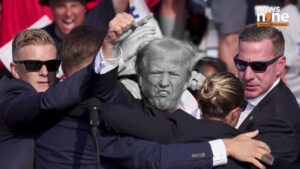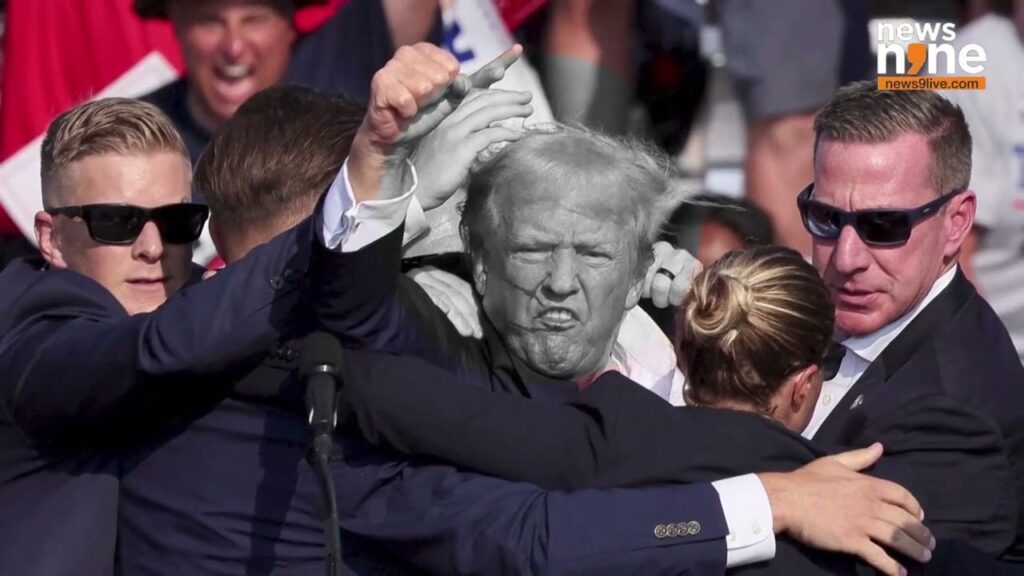The Trump Conspiracy: Was It Masterminded? Unveiling the Truth!
The Trump Conspiracy has been one of the most talked-about and controversial topics in recent political history. Whether you’re a skeptic or a believer, this conspiracy theory has captivated the public’s imagination and sparked intense debates. But what if there’s more to it than meets the eye? Was The Trump Conspiracy genuinely masterminded from the start, or is it a web of coincidences and misinterpretations? In this article, we dive deep into The Trump Conspiracy, exploring its origins, key figures, and the evidence that surrounds it. Prepare for a journey that will challenge your perceptions and shed light on one of the most intriguing political narratives of our time.
Unraveling The Trump Conspiracy
To fully appreciate the depth and complexity of The Trump Conspiracy, we need to start at the beginning. The conspiracy theories suggest that former President Donald Trump, along with various associates and foreign entities, orchestrated a grand plan with far-reaching implications. But what exactly does this conspiracy entail, and how did it come to be?
Origins and Development of The Trump Conspiracy
The Trump Conspiracy theories began to gain traction during Trump’s 2016 presidential campaign. Claims of secret dealings, covert plans, and foreign interference started circulating, fueling public speculation and media frenzy. These theories posited that Trump’s actions and decisions were not spontaneous but part of a meticulously calculated strategy designed to achieve specific political and personal goals.
Theories varied widely, from allegations of collusion with foreign governments to claims of secretive political maneuvers aimed at undermining democratic institutions. The development of these theories often depended on a mix of speculation, selective interpretation of facts, and sensational media coverage.
Key Figures in The Trump Conspiracy
Several individuals are frequently mentioned as central players in The Trump Conspiracy. Understanding their roles and relationships helps unravel the conspiracy’s narrative.
•Donald Trump: As the central figure, Trump is often portrayed as the mastermind behind the conspiracy. His actions, decisions, and public statements are scrutinized for signs of a hidden agenda.
•Senior Advisors and Associates: Key figures such as Michael Cohen, Trump’s former lawyer, and Steve Bannon, a former chief strategist, are often cited as crucial to the conspiracy. Their roles and statements are examined for evidence of their involvement in the alleged plans.
•Foreign Leaders and Officials: Theories also involve foreign actors, such as Russian officials, who are alleged to have collaborated with Trump. These claims focus on potential collusion and secret deals made during and after the 2016 election.
Examining Evidence for The Trump Conspiracy
To assess whether The Trump Conspiracy was genuinely well-planned, we must critically examine the evidence. This involves analyzing public records, investigative reports, and personal testimonies.
Public Records and Investigative Reports
Public records and investigative reports offer a glimpse into the validity of The Trump Conspiracy claims. Key documents include:
•The Mueller Report: This comprehensive investigation by Special Counsel Robert Mueller explored potential collusion between Trump’s campaign and Russian officials. The report’s findings, though not conclusively proving a criminal conspiracy, highlighted various contacts and interactions that fueled speculation.
•Congressional Investigations: Congressional committees also investigated alleged Russian interference and Trump’s conduct. Their findings contribute to the broader understanding of the conspiracy theories.
Testimonies and Eyewitness Accounts
Eyewitness accounts and testimonies provide additional context to The Trump Conspiracy. Notable testimonies include:
•Michael Cohen’s Testimony: As Trump’s former personal lawyer, Cohen’s statements about Trump’s dealings and potential wrongdoing have been pivotal in shaping the conspiracy narrative.
•Public Statements and Interviews: Statements made by Trump and his associates, as well as interviews with key figures, offer insights into their perspectives and potential involvement.
Counterarguments and Skepticism
While The Trump Conspiracy has its proponents, there are also significant counterarguments. These include:
•Alternative Explanations: Some argue that many of the events and actions attributed to the conspiracy can be explained by ordinary political behavior or misinterpretations.
•Discrepancies and Inconsistencies: Critics point out inconsistencies in the conspiracy theories, such as lack of concrete evidence and the often speculative nature of the claims.
Media Influence and Public Perception
The role of media in shaping public perception of The Trump Conspiracy cannot be understated. Media coverage influences how the conspiracy is perceived and discussed. Key points include:
•Diverse Media Coverage: Different media outlets have varying perspectives on The Trump Conspiracy, which affects public opinion. Some reports emphasize sensational aspects, while others focus on more balanced analyses.
•Impact on Public Opinion: Media portrayal can sway public opinion, either reinforcing belief in the conspiracy or fueling skepticism.
Expert Opinions on The Trump Conspiracy
Experts in political science, law, and conspiracy theories offer valuable insights into The Trump Conspiracy. Their analyses help assess the plausibility of the conspiracy and its implications:
•Political Analysts: These experts evaluate the political ramifications of the conspiracy, considering factors such as power dynamics and strategic motivations.
•Legal Experts: Legal professionals assess the validity of the claims from a legal standpoint, examining whether any actions constitute criminal behavior.

